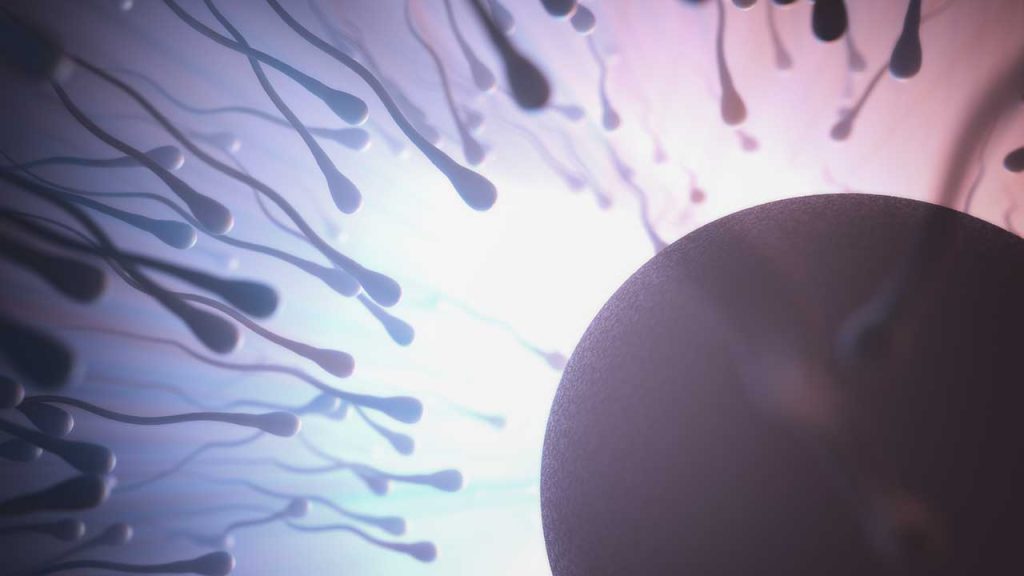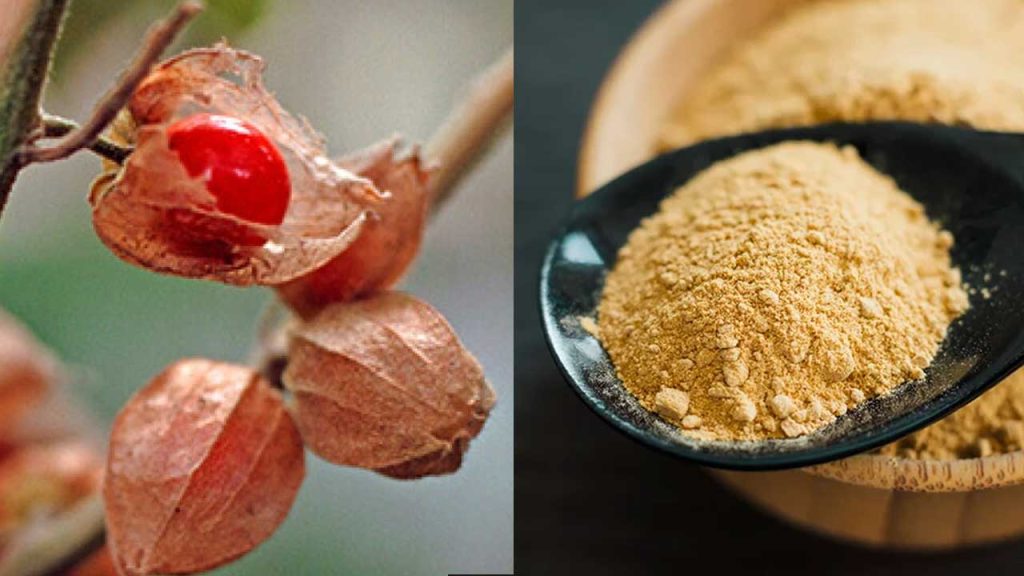Ashwagandha or Maca? Comparing the Benefits of These Popular Adaptogens

ListedFit is reader-supported. When you buy through links on our site, we may earn a small commission.
When it comes to natural supplements, you might have heard about ashwagandha and maca. These powerful plants have been used for thousands of years to promote health and wellness, but what are the differences between them? In this article, you’ll learn about their unique benefits and how they can potentially support your well-being.
Ashwagandha, native to India, is known for its ability to regulate the body’s stress response, making it a popular adaptogenic herb. It has been used for over 4,000 years in Ayurvedic medicine to manage a wide variety of conditions, such as increasing testosterone, muscle mass, and reducing anxiety.
On the other hand, maca, a Peruvian plant, is a highly nutritious cruciferous vegetable belonging to the same family as broccoli and kale. Although it also supports sexual health and physical performance, its primary benefit is its ability to boost energy levels and improve libido.
Both ashwagandha and maca can offer unique health advantages, but it’s essential to understand their individual properties and potential applications in order to effectively integrate them into your wellness journey. Keep reading to explore their similarities and differences, and discover how they can enhance your well-being.
Table of Contents
Ashwagandha and Maca: Origins and Background
Historical Use and Traditional Medicine
Ashwagandha, native to India, has been used in Ayurvedic medicine for over 4,000 years to treat a wide variety of conditions. It is well-known for reducing stress and promoting overall health and wellbeing.
On the other hand, maca is a root native to the Andes mountains of Peru. It has been used by the locals for thousands of years as a food source and aphrodisiac. Maca is known for its energy-boosting properties and fertility-enhancing effects.
Botanical Profile
Both ashwagandha and maca have deep roots in traditional medicine and have been used for centuries to promote health and wellness. Their unique botanical profiles and traditional uses showcase their potential benefits and provide insight into their roles as popular superfoods.
Ashwagandha belongs to the Solanaceae family of plants, commonly known as Nightshades, which includes vegetables like tomatoes and potatoes. The scientific name for ashwagandha is Withania Sommnifera, and it is harvested for its roots, which are used medicinally.
Maca, also harvested for its roots, is a cruciferous vegetable closely related to turnips and radishes. The botanical name for maca is Lepidium meyenii, and it grows naturally in the high altitudes of the Andes.
Ashwagandha vs. Maca: Health Benefits and Uses of Each
| Herb | Ashwagandha | Maca |
|---|---|---|
| Health Benefits |
|
|
Stress and Anxiety Relief
Ashwagandha is well-known for its ability to reduce stress and anxiety. This is due to its adaptogenic properties, which help your body maintain balance and adapt to stressors. By taking ashwagandha, you can experience a calming effect and improved sleep quality.
Maca, on the other hand, may provide mild relief from stress and anxiety, but it is not as potent as ashwagandha.
Energy and Endurance Boost
Both ashwagandha and maca can improve your physical energy, but they work in different ways.
Ashwagandha is thought to improve muscle strength, while maca is known for its energy-boosting and aphrodisiac properties, making it a popular choice among athletes. To enhance physical performance, many choose to incorporate both of these into their diet.
Hormone Balance and Fertility Support

Maca Root
Maca has been shown to have potential benefits for hormone balance. Some studies have suggested that maca may be particularly helpful for improving symptoms associated with hormonal imbalances, such as hot flashes, mood swings, and sleep disturbances.
Additionally, maca has been shown to have an effect on the production of certain hormones, including testosterone, estrogen, and progesterone, although more research is needed to fully understand these effects.
Maca is a promising natural remedy for supporting hormonal health, although more research is definitely needed to determine its full range of benefits and potential risks.
Ashwagandha
Ashwagandha also has potential benefits for hormone balance. It has been shown to have adaptogenic properties, which means it can help the body better manage stress and reduce cortisol levels. High levels of cortisol, which is often associated with chronic stress, can negatively impact hormonal balance and contribute to a range of health issues.
By reducing cortisol levels, Ashwagandha may help support hormonal balance. Additionally, some studies have suggested that Ashwagandha may have an effect on thyroid hormone levels and may be helpful for individuals with hypothyroidism.
Both Ashwagandha and Maca have unique benefits for hormonal health, and which one is better for you may depend on your specific health concerns and needs.
Cognitive and Mood Enhancement

When it comes to cognitive function and mood, both ashwagandha and maca can provide some worthwile benefits.
Ashwagandha is known to help reduce anxiety, which can indirectly enhance cognitive function by improving focus and reducing stress-induced distractions. Maca, on the other hand, is linked to improving cognitive function more directly and may even boost your mood.
How Much Ashwagandha and Maca Should You Take?
Ashwagandha Recommended Dosages
For ashwagandha, the recommended dosage can vary depending on your needs. Most research suggests taking 250-500 mg per day for at least one month may be beneficial (Healthline). For specific goals like fertility and hormonal balance, some sources recommend up to 5,000 mg/day, while for muscle growth, 500-600 mg/day might be enough.
| Use | Recommended Dosage |
|---|---|
| Reducing stress and anxiety | 125-500 mg/day of standardized root extract or 300-600 mg/day of standardized leaf extract |
| Improving brain function and memory | 500-600 mg/day of standardized root extract or 300-500 mg/day of standardized leaf extract |
| Reducing inflammation and pain | 5 g/day of powder or 500-600 mg/day of standardized root extract |
| Improving physical performance and endurance | 500-600 mg/day of standardized root extract |
| Managing symptoms of hypothyroidism | 6000 mg/day of powder or 600-1200 mg/day of standardized root extract |
Maca Root Recommended Dosages
On the other hand, maca root dosage for adults typically ranges from 1.5 to 3.5 grams daily for six to 16 weeks (Verywell Health). The appropriate dosage may vary depending on the preparation used, such as capsules, liquid, or powder.
| Use | Recommended Dosage |
|---|---|
| Increasing energy and stamina | 1.5-5 g daily |
| Improving fertility and sexual function | 1.5-3 g daily |
| Reducing anxiety and depression | 3-5 g daily |
| Enhancing athletic performance | 5-7 g daily |
| Regulating hormones and menstrual cycle | 1.5-3 g daily |
| Boosting immune system | 3-5 g daily |
Types of Supplements
Ashwagandha is commonly available in the form of liquid extract or tablets. You can expect to pay about $18 for 100 tablets or $17 for 2 oz of liquid extract.
Maca, on the other hand, is generally sold as a powder or in capsules. Typical prices for maca supplements are $27 for 1 lb of powder or $13 for 100 capsules.
What’s the Best Time to Consume?
The best time to take ashwagandha is generally flexible, but most people find it more effective when taken consistently at the same time each day. You might choose to take it in the morning or evening, depending on your personal preference.
As for maca, it’s usually best to consume it in the morning, as it can provide an energy boost that might interfere with sleep if taken too late in the day. It’s important to start with a lower dosage and gradually increase it to the recommended amount, as your body adapts to its effects.
Are There Any Side Effects?
Common Side Effects
Ashwagandha and maca both have their own set of possible side effects. For ashwagandha, some people may experience mild side effects like headaches, sleepiness, and stomach upset. On the other hand, maca’s side effects are not very well documented, but it’s still essential to follow recommended dosages.
Contraindications and Interactions
Before taking any supplements, it’s important to consider any existing health conditions and medications you’re currently taking. If you’re on medication to lower your blood sugar, such as for Type 2 Diabetes, you should be cautious when using ashwagandha, as it may increase the risk of hypoglycemia.
As for maca, there are no well-established contraindications or interactions, but it’s always good practice to consult with your healthcare provider.
Pregnancy and Lactation
If you’re pregnant or breastfeeding, it’s generally best to err on the side of caution when it comes to supplements. Pregnant women, in particular, should avoid ashwagandha, as its safety during pregnancy is not well-established and it may pose potential risks (Medical News Today).
As for maca, insufficient data is available regarding its safety during pregnancy and breastfeeding. It’s always recommended to consult your healthcare provider before taking any supplement during this period.
Remember that everyone’s body is different, and what works best for one person might not work as well for another.
Maca vs Ashwagandha: Which is Better?

Choosing between maca and ashwagandha can be challenging, as both superfoods have impressive benefits. However, the choice ultimately depends on your personal goals and health concerns.
Maca is well-known for its ability to increase energy, improve libido, support cognitive function, and enhance athletic performance. It can be particularly helpful if you’re aiming to boost your sexual health or looking for a natural way to enhance your workout sessions. Maca also offers essential nutrients, making it a more nutritious option.
On the other hand, ashwagandha’s primary benefits include stress reduction, promoting a sense of calm, and improving sleep quality. If you’re struggling with anxiety or sleep issues, ashwagandha might be a better option for you.
Here are some key points to help you decide between maca and ashwagandha:
- Maca:
- Increases energy
- Improves libido
- Supports cognitive function
- Enhances athletic performance
- More nutritious
- Ashwagandha:
- Reduces stress
- Promotes calm
- Improves sleep quality
Remember, there’s no one-size-fits-all answer, and your choice should be based on your individual needs and desired outcomes. It’s also worth noting that both superfoods can be safely combined in your daily routine, potentially providing a synergistic effect and enhancing each other’s benefits).
Can You Take Ashwagandha and Maca Together?
When deciding between ashwagandha and maca, it is essential to consider your specific goals and needs:
- If you’re looking to reduce stress and anxiety, improve sleep, or enhance your physical performance, ashwagandha might be the better choice for you.
- If you want to improve your libido, energy levels, or menopause symptoms, maca may be the preferable option.
Both ashwagandha and maca are considered safe for most people, and there’s no evidence to suggest that taking them together is harmful. In fact, some people believe that taking these two adaptogens together may enhance their individual benefits, although more research is needed to confirm this.
It’s important to note, however, that like all supplements, ashwagandha and maca can interact with certain medications and may not be suitable for everyone. For example, if you’re taking medication for a thyroid disorder, it’s best to avoid ashwagandha as it may interfere with thyroid function. Similarly, if you’re taking medication for high blood pressure, maca may not be suitable as it may lower blood pressure. Additionally, both ashwagandha and maca may interact with certain medications, such as antidepressants and immunosuppressants.
In general, if you’re considering taking ashwagandha and maca together, it’s a good idea to start with a low dose and gradually increase as needed. This is done by many people. The recommended dosage for ashwagandha is typically 300-500 mg per day, while the recommended dosage for maca is typically 1-3 grams per day. Be sure to follow the instructions on the label of your supplement, and if you experience any side effects or have any concerns, talk to your healthcare provider.
Author
Latest entries
 FitnessAugust 19, 2023Yohimbe vs Yohimbine: A Quick Comparison Guide
FitnessAugust 19, 2023Yohimbe vs Yohimbine: A Quick Comparison Guide AshwagandhaJune 16, 2023Is Ashwagandha Good for Working Out? Key Benefits Explored
AshwagandhaJune 16, 2023Is Ashwagandha Good for Working Out? Key Benefits Explored Sports HeadphonesMay 25, 2023Why Your EarBuds Keep Falling Out – Quick and Easy Solutions
Sports HeadphonesMay 25, 2023Why Your EarBuds Keep Falling Out – Quick and Easy Solutions Nike ShoesMay 12, 2023Do Nikes Run Big or Small? Decoding the Perfect Fit
Nike ShoesMay 12, 2023Do Nikes Run Big or Small? Decoding the Perfect Fit
Affiliates:
This post may contain affiliate links that at no additional cost to you, the site may earn a small commission. We only recommend products we would use ourselves and all opinions expressed on this site are our own.
General Advice:
The information provided in this article is for general informational purposes only. It is not intended as a substitute for professional advice. Always consult with a qualified healthcare professional before starting any new diet, exercise program, or making changes to your health routine.
Accuracy Advice:
While we strive to provide up-to-date and accurate information, the content in this article may not reflect the most current research or medical guidelines. We encourage readers to do further research and consult with professionals for more personalized advice.
Our Recommendations:
The products and services mentioned in any of our articles are recommended based on our independent research and personal experience. We are not sponsored by any company. We aim to suggest products and services we believe are of high quality and could be beneficial to our readers.






